The Comprehensive and Progressive Agreement for Trans-Pacific Partnership (CPTPP) has really created a great driving force for Vietnam's export growth.
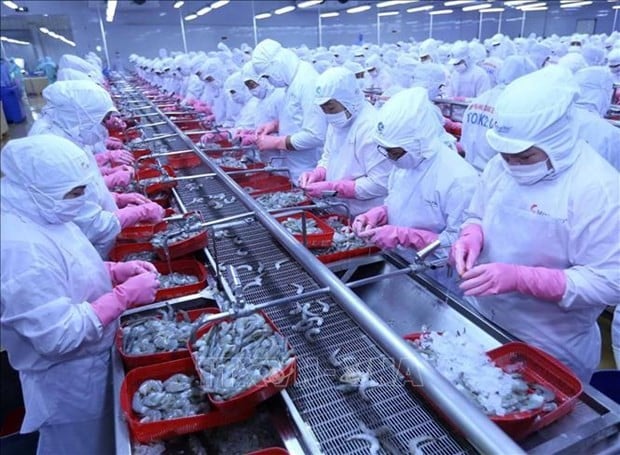 |
| Vietnam's trade balance with the CPTPP bloc often has a trade surplus. (Source: VNA) |
CPTPP officially took effect in Vietnam from January 14, 2019.
After more than 5 years of implementing this agreement, Vietnam's export turnover has grown rapidly in a number of new markets in the Americas with which Vietnam had not previously signed a free trade agreement (FTA), typically Canada, Mexico, and Peru.
Big driver for export growth
The Ministry of Industry and Trade assessed that CPTPP has really created a great driving force for Vietnam's export growth.
Mr. Ngo Chung Khanh, Deputy Director of the Multilateral Trade Policy Department (Ministry of Industry and Trade) said: "In fact, over the past 5 years, we have also visualized the basic picture of the benefits that the CPTPP Agreement brings to Vietnam. The outstanding benefits of Vietnam when participating in CPTPP are market opening and favorable import and export".
In 2018, Vietnam's total export turnover to countries in this bloc reached 39.5 billion USD. By the end of 2023, this figure had increased by 20 billion USD, reaching 50.5 billion USD. Vietnam's trade balance with the CPTPP bloc is often in surplus.
The growth rate is remarkable, because during this period, the global economy and trade in general and trade between Vietnam and CPTPP partners in particular are facing many difficulties such as economic downturn, epidemics, geopolitical conflicts, etc.
After 5 years of implementation, up to now, Vietnam's export of goods to this market bloc has recorded a fairly high growth rate, but it is not uniform, mainly concentrated in some major markets such as Canada, Japan, Singapore, Malaysia, Australia. Meanwhile, export to Peru, New Zealand, Brunei has a low turnover, less than 1 billion USD/year.
Besides import and export, Mr. Ngo Chung Khanh said that Vietnam has set expectations that CPTPP will help promote institutional reform; promulgate more transparent and clear legal documents, and develop a more solid mindset for building legal documents... thereby bringing positive impacts and benefits to businesses.
Basically, up to now, Vietnam has revised and newly promulgated quite a number of legal documents (both at the law and sub-law levels) to promptly implement the regulations that take effect immediately for the CPTPP.
Some documents were issued later but were applied retroactively from the time the Agreement came into effect to ensure the interests of businesses and related entities in the process of implementing commitments, for example in the fields of tax and government procurement.
"In addition, Government agencies, ministries and branches regularly monitor, review and closely coordinate with relevant agencies to develop and complete draft laws, decrees and circulars to amend and supplement them in accordance with commitments in FTAs, including CPTPP and international treaties to which we are a member.
Provinces and localities have also proactively reviewed, developed, and appraised legal documents and policy mechanisms issued by localities and provinces, thereby promptly adjusting and supplementing them to comply with state legal documents and commitments in international economic integration," Mr. Ngo Chung Khanh informed.
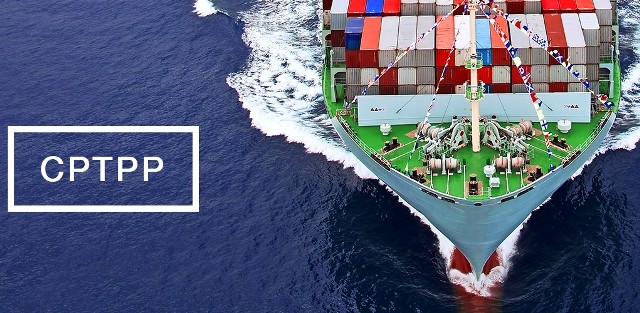 |
| After 5 years of implementation, up to now, Vietnam's goods exports to the CPTPP market block have recorded a fairly good growth rate. (Source: Investment Newspaper) |
For businesses to fully utilize CPTPP
However, according to the assessment of the Ministry of Industry and Trade, Vietnamese enterprises have not yet fully exploited the benefits of CPTPP. For example, seafood products - one of the strong export products, but the market share in CPTPP is still modest compared to the current market capacity.
The Ministry said that one of the reasons why Vietnamese enterprises have not yet fully exploited the CPTPP market space is because many enterprises have not paid attention to and have not had an effective and suitable market approach strategy; enterprises mainly focus on traditional and simple business, exploiting nearby markets.
On the other hand, most businesses are still afraid of complicated standards, or do not proactively access market information immediately after CPTPP comes into effect. This affects export orientation to CPTPP member markets, especially potential markets such as Canada, Peru, and Mexico.
Particularly in the Canadian market, Ms. Tran Thu Quynh, Vietnam's Trade Counselor in Canada, commented that the rate of Vietnamese enterprises taking advantage of CPTPP when entering this market is still low.
Canada is the second largest export market in the bloc, but only 18% use CPTPP model C/O; more than 80% still use incentives under the Most Favored Nation (MFN) tax mechanism and Generalized Tariff Preferences.
However, the Generalized Tariff Preferences mechanism will no longer be effective in December 2023. Enterprises need to better meet the rules of origin to enjoy C/O preferences in the CPTPP, when MFN preferences end.
In the coming time, in order to support businesses in taking advantage of FTAs, including CPTPP, the Ministry of Industry and Trade is deploying and operating the National Electronic Information Portal on Free Trade Agreements (FTAP) at https://fta.gov.vn/.
The Ministry of Industry and Trade continues to preside over and coordinate with relevant ministries, branches and organizations to operate and upgrade FTAP to meet the official information needs of businesses about FTAs. At the same time, at FTAP we will provide information to support the business trading process such as domestic and foreign market situations, import and export regulations of Vietnam and partner countries, trade defense, labor, environment, sustainable development, intellectual property.
Along with that, the Ministry of Industry and Trade continues to maintain the requirement for the Trade Office system to strengthen research on the host country market through periodic and ad hoc reports to update the CPTPP market, thereby providing in-depth comments and analysis for forecasting.
The information provided by the Trade Office system includes import and export policies of CPTPP countries, technical requirements, legal issues, trade defense measures, verification, goods sources, and partners.
On the part of the Vietnamese Trade Offices in the localities within the framework of the Agreements, they have been proactively disseminating and introducing the agreements, as well as the incentives and comparative advantages of Vietnamese goods in the FTAs to relevant agencies, the business community, and local people through trade and investment promotion activities, conferences, and specialized seminars.
Source: https://baoquocte.vn/xuat-khau-hang-hoa-no-ro-nho-cptpp-281517.html


![[Photo] General Secretary concludes visit to Azerbaijan, departs for visit to Russian Federation](https://vphoto.vietnam.vn/thumb/1200x675/vietnam/resource/IMAGE/2025/5/8/7a135ad280314b66917ad278ce0e26fa)
![[Photo] General Secretary To Lam begins official visit to Russia and attends the 80th Anniversary of Victory over Fascism](https://vphoto.vietnam.vn/thumb/1200x675/vietnam/resource/IMAGE/2025/5/8/5d2566d7f67d4a1e9b88bc677831ec9d)
![[Photo] Prime Minister Pham Minh Chinh meets with the Policy Advisory Council on Private Economic Development](https://vphoto.vietnam.vn/thumb/1200x675/vietnam/resource/IMAGE/2025/5/8/387da60b85cc489ab2aed8442fc3b14a)
![[Photo] National Assembly Chairman Tran Thanh Man chairs the meeting of the Subcommittee on Documents of the First National Assembly Party Congress](https://vphoto.vietnam.vn/thumb/1200x675/vietnam/resource/IMAGE/2025/5/8/72b19a73d94a4affab411fd8c87f4f8d)
![[Photo] President Luong Cuong presents the decision to appoint Deputy Head of the Office of the President](https://vphoto.vietnam.vn/thumb/1200x675/vietnam/resource/IMAGE/2025/5/8/501f8ee192f3476ab9f7579c57b423ad)






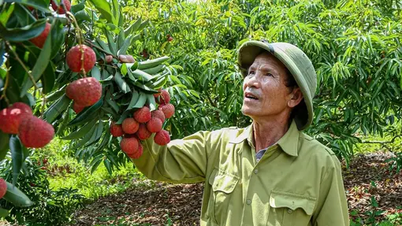




















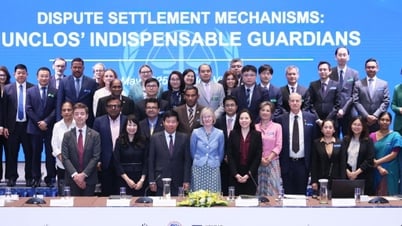






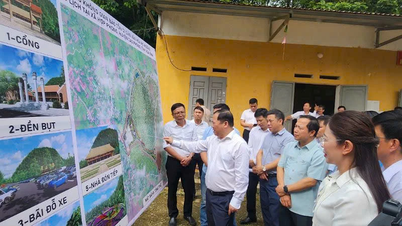



















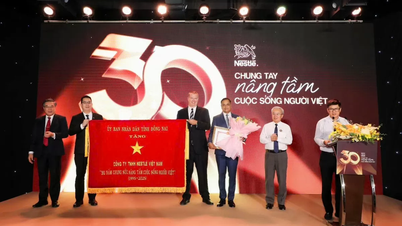




![[Photo] Prime Minister Pham Minh Chinh talks on the phone with Singaporean Prime Minister Lawrence Wong](https://vphoto.vietnam.vn/thumb/402x226/vietnam/resource/IMAGE/2025/5/8/e2eab082d9bc4fc4a360b28fa0ab94de)
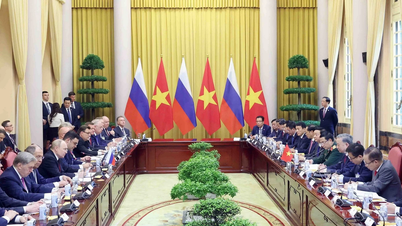

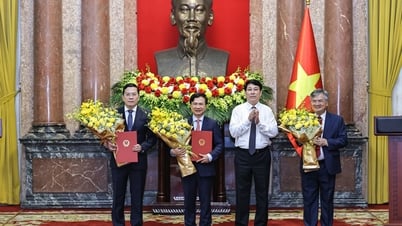






























Comment (0)